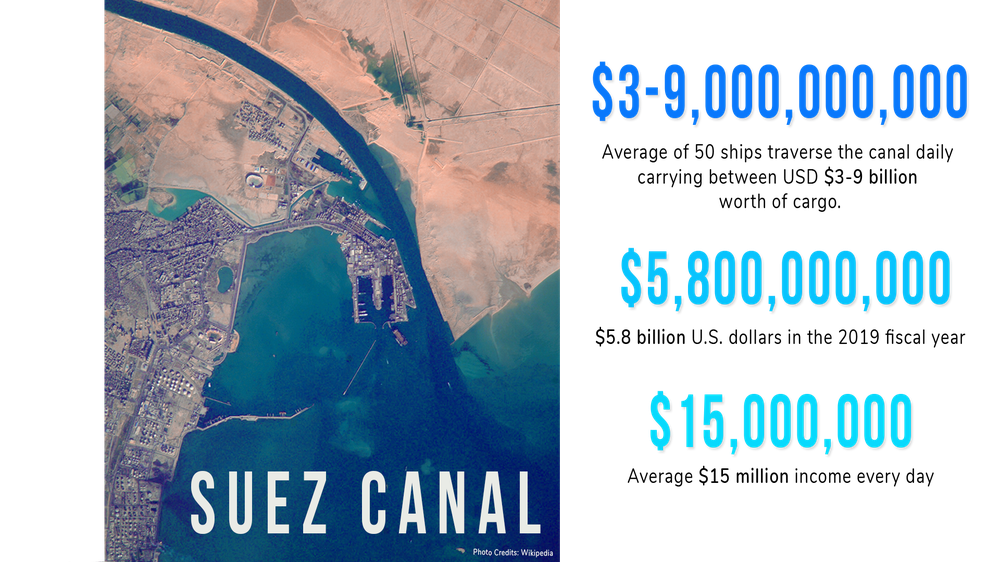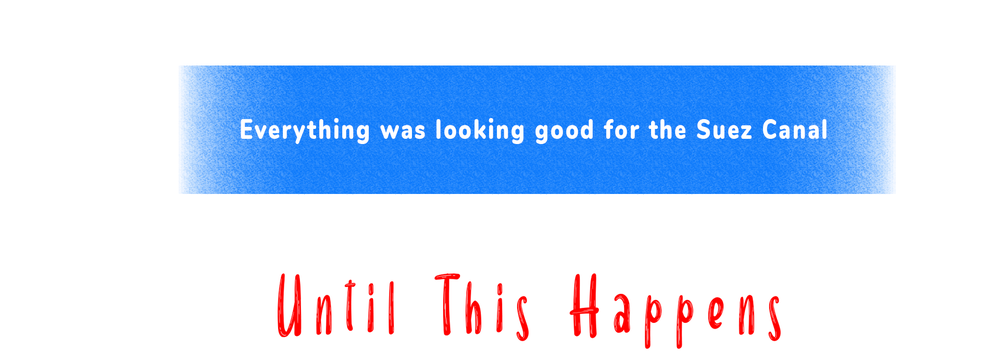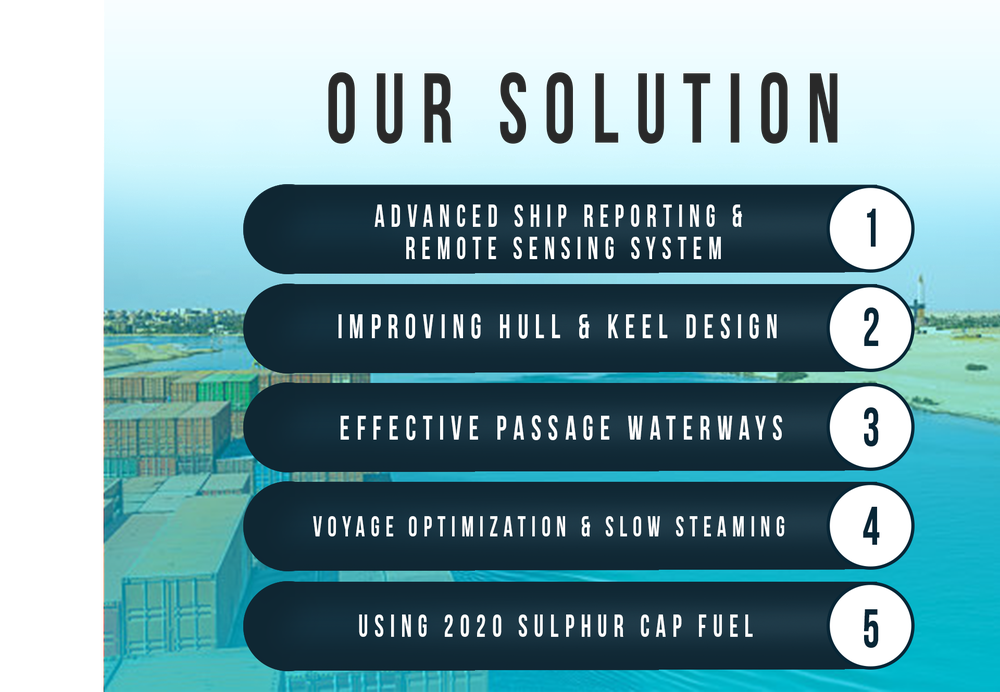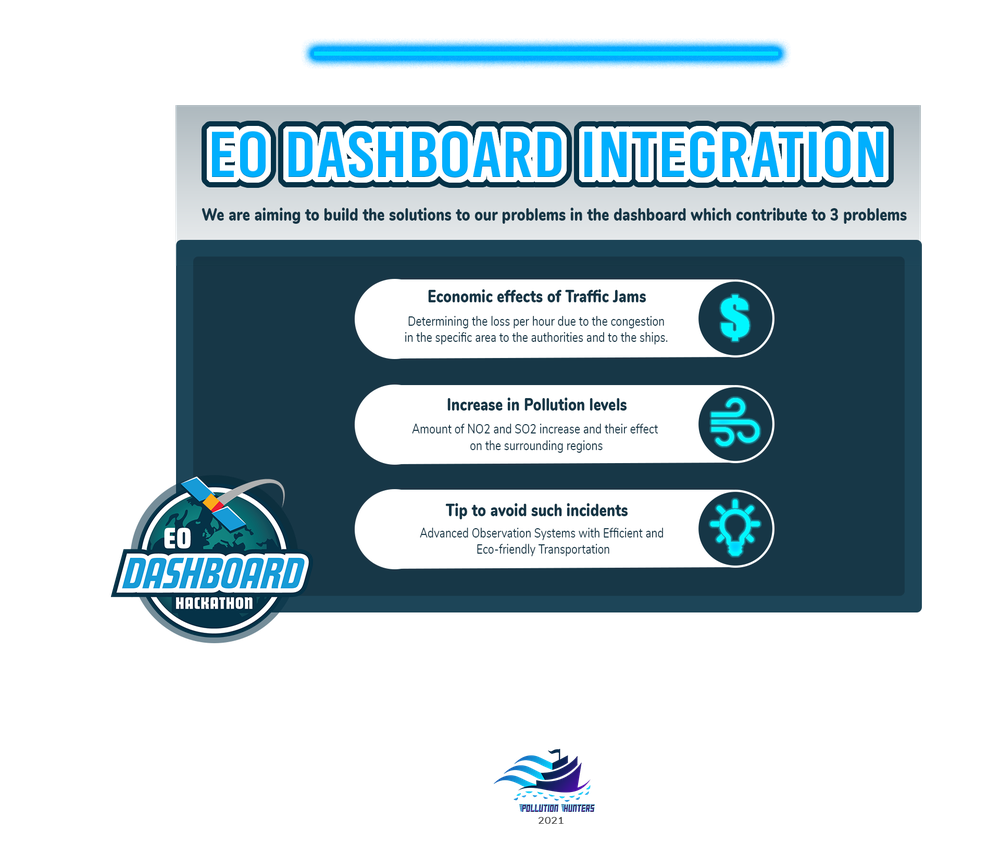The Suez Canal is an artificial sea-level waterway in Egypt connecting the Mediterranean Sea to the Red Sea and mostly Europe and Asia. It is an unlocked canal with a length of 193kms (633202ft) and width of 205mtr (673ft) along with a depth of 24mtr (79ft). The waterway starts from Port Said in the northern end and Port Tewfik in the southern end.
This canal has led to the reduction in travel time of ships between the Arabian and Mediterranean sea by 8 to 10days. And this has led to the increase in economic profits by cutting fuel usage, saving time, and decreasing emissions of gases leading to pollution.
The normal ship traffic in the Suez Canal is 97ships/day. During the pandemic time 2020, the traffic was reduced to 50ships/day.
That was 18500 ships.
It takes 12 to 16hrs to transit the canal.
Ships have to travel in a convoy. One Northbound and two southbound.
Only north movement is allowed in a single run without stops, which means southbound ships have to wait for clearance. This will lead to increased emission of pollutants by waiting for ships. Passage of ships starts at 4 am from both sides. The canal should be passed only at times between 11 am and 4 pm at speeds of 8 knots (9mph/15 km hr).
Suez blockage Incident:
Date- 23-03-21 7.40pm Local
Ship- Ever Given operated by Evergreen Marine, Taiwan
Journey- Malaysia to the Netherlands
Rescued on- 29-03-21 15.05 Local
The ship drifted and got stuck in the canal causing a huge traffic jam. The cause is wind knocking off the ship. On the initial days, the no. of ships stuck behind was 369. The wind speed recorded was 40knots when the ship struck the banks. 14 tugboats were used along with bulldozers for dredging. The blockage was cleared on 29-03-2021 and at that time the backlog ship count was 450. Suez was only fully operable by 2-04-2021.
Methods of Observation
- Before the event NO2 levels were low at the entrance of the Suez canal and also the NO2 levels on land were low when compared to the values on the sea.
- At the time of the event, NO2 levels were moderate across the study area because at the time the ship engines were running and various equipments were used for dredging.
- After the event, it was clearly visible that a major section of the study area has identified low NO2 levels. The NO2 values were also moderate at sea.




